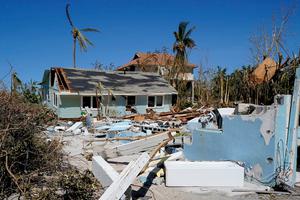A section of ice more than 100 square miles in size — four times as large as Manhattan — has broken off the Pine Island Glacier in West Antarctica. It is the fifth major calving, or ice loss, event on the glacier since 2000.
Scientists told The Washington Post that they are monitoring Pine Island Glacier closely for signs that its ice loss may be speeding up. Pine Island alone has the potential to raise global sea level 1.7 feet if it melts completely, The Post reported. In 2015, the glacier lost a piece of ice 220 square miles in size, and recent calving events are originating farther and farther inland, Stef Lhermitte, a satellite observation scientist at Delft University of Technology in the Netherlands, tweeted.
In a paper published last year, scientists reported that rifts in the Pine Island Glacier were originating in the middle and underneath its floating ice shelf, not along its face, which is generally how pieces of ice calve from a glacier. The researchers theorized this was because warmer ocean waters are reaching farther underneath the base of the glacier and the ice shelf.
“We predicted that the rifting would result in more frequent calving, which is what’s happening here,” Ian Howat, a climate scientist at Ohio State University and co-author of the 2016 study, told The Post. “If new rifts continue to form progressively inland, the significance to ice shelf retreat would be high.”
Pine Island Glacier's most recent ice loss event, as seen in satellite images from September 21 and 23, 2017. Stef Lhermitte, Twitter



